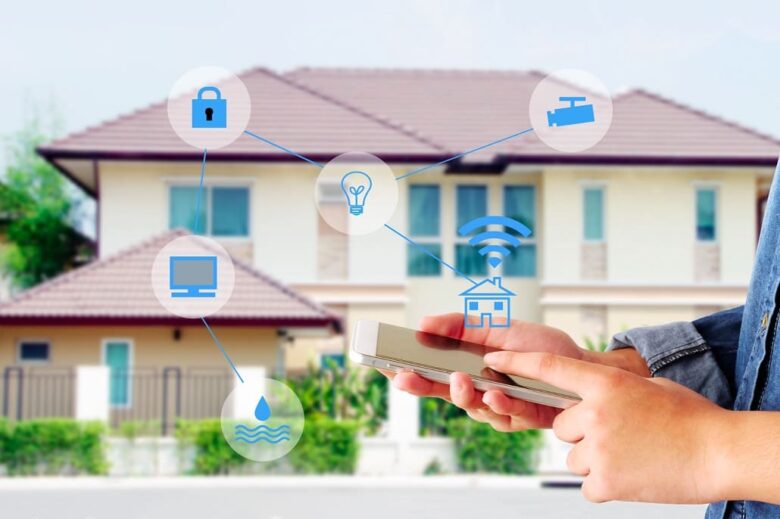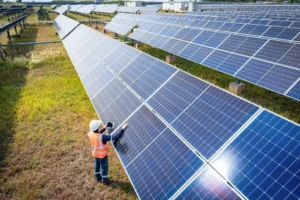In today’s fast-paced world, saving energy has become a lifestyle choice and a global necessity. With concerns about climate change, carbon footprints, and rising energy bills, people want smarter solutions that minimize energy consumption while maintaining comfort and convenience. Energy-efficient smart home technology can help. These devices simplify life and encourage a greener lifestyle. By using smart technology in your home, you can save money, reduce waste, and protect the environment.
Climate Control & Smart Thermostats:
Smart thermostats are an important energy-saving device in smart homes. Smart thermostats adjust the temperature based on your usage habits. They can lower the heating or cooling temperature when you are away and restore your settings before you return. Some thermostats even adjust the heating and cooling temperature based on the weather forecast. This level of automation prevents energy waste. Smart thermostats can save you money on heating and cooling costs in the long run, making your home more energy efficient and comfortable.
Smart LED Lighting Systems:
Lighting is another area where smart technology can improve energy efficiency. Traditional incandescent bulbs consume a lot of energy and have a short lifespan. LED bulbs use less energy and last 25 times longer. With smart lighting systems, LED bulbs can be set to turn off when no one is in a room or adjust brightness based on the time of day. Smartphones or voice commands can control many appliances for added convenience. Motion sensors can save energy by turning on lights only when needed.
Smart Outlets/Power Strips:
Even when turned off, many electronic devices continue to consume power. These “phantom loads” can increase your energy bill without you even knowing it. Smart power strips and outlets can solve these problems. They automatically turn off devices that are in standby or inactive. Some also offer remote outlet control and schedules to automatically turn on power. These features can help home entertainment systems, computers, and kitchen appliances save energy and promote greener living.
Smart Energy-Saving Appliances:
Home appliances like refrigerators, dryers, and dishwashers consume a lot of energy. Energy-saving smart appliances optimize performance, reduce energy consumption, and make them easier to use. Smart refrigerators and washing machines can optimize laundry routines based on energy usage trends. Mobile apps on these devices allow consumers to monitor and adjust their energy usage in real time. Smart appliances can reduce your home’s carbon footprint and save energy and money in the long run.
Smart Curtains and Blinds:
Windows are a major source of heat loss and gain, so temperature management is one of the most energy-intensive parts of home maintenance. Smart blinds and curtains open and close automatically based on time, weather, and schedules to regulate indoor temperatures. For example, they can close during the hottest hours to keep your home cool and reduce air conditioning use. Some systems can connect to smart home devices, like thermostats, to enhance climate control.
Home Energy Monitoring Systems:
To be energy efficient, you first need to understand how and where your home uses energy. Smart home energy monitors can reveal energy usage patterns. These systems can detect the use of appliances and devices, identify energy hogs, and recommend energy-saving methods. Energy monitoring systems help families make smart decisions and save energy by providing instant feedback. Some systems can alert users when appliances are using too much power, so problems can be identified early.
Smart Irrigation Systems:
Sustainable living also requires water conservation, and smart irrigation systems can keep lawns and gardens healthy. These systems optimize irrigation based on weather, soil moisture, and plant species. Smart irrigation systems automatically adjust to current conditions, preventing overwatering and reducing water bills. They can be controlled remotely via a smartphone, so you can water your environment anytime, anywhere. These systems make homes more environmentally friendly and efficient by using only the water you need.
Voice Assistants for Energy Management:
Amazon Alexa, Google Assistant, and Apple Siri offer more than just music and Q&A assistants. When connected to smart home devices, they can improve energy management. With voice commands, you can dim lights, adjust temperatures, close blinds, and turn off appliances. Use these assistants to set reminders or automate daily schedules to maintain energy-saving habits. Voice assistants simplify energy-saving measures through central control, making for a more sustainable life.
Smart Water Heaters and Temperature Controls:
Hot water is a major energy hog in a home. Smart boilers reduce hot water consumption by heating on demand or according to a schedule. By programming these systems to avoid heating during peak hours, you can save money. Some types of boilers also offer remote temperature control and alerts for leaks or inefficiencies. Smart boilers can reduce unnecessary heating and improve control, making homes more efficient and environmentally friendly.
Integration and Automation for Maximum Efficiency:
The real benefit of a smart home is the seamless integration of devices and systems. Automation allows multiple devices to respond to a single command, such as leaving or going to bed. When you leave for work, you can program devices in your home to do things like turn off lights, adjust thermostats, and lock doors. These habits can save energy and make life easier. Homeowners can use a central control center or mobile app to customize automation scenarios based on their lifestyle and energy-saving goals.
Conclusion:
Energy-efficient smart home devices are changing our lives through technology and sustainability. These devices are simple to use and can reduce energy consumption, utility bills, and environmental impact. From smart thermostats and lighting to integrated automation systems, each innovation contributes to a greener future. Smart home technology is a responsible choice that benefits people and the world, not just a trend. Buying energy-efficient products helps us live more sustainably and ethically.
FAQs:
1. What are the benefits of energy-efficient smart home devices?
They can help protect the environment by reducing energy consumption, utility bills, convenience, and carbon emissions.
2. Do smart devices use a lot of energy?
Most smart devices are energy-efficient, using relatively little power compared to the energy they save.
3. Are smart home devices difficult to install?
Many smart devices come with simple installation instructions. Some require professional installation due to their complexity.
4. Are smart home devices compatible?
Most smart devices can be controlled via a hub or app, allowing for automation and coordination.
5. Is smart home technology worth it?
The initial cost can be high, but most homeowners find that the energy savings and long-term environmental benefits are worth it.




